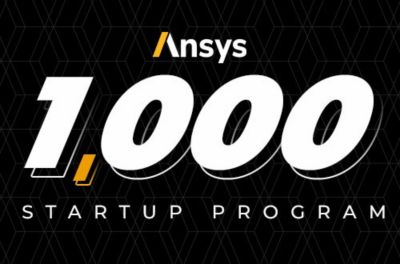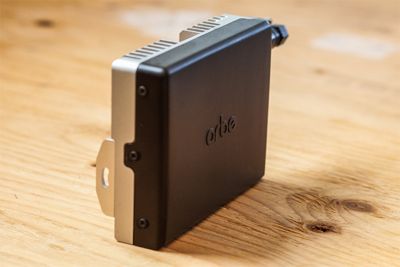-
-
Access Free Student Software
Ansys empowers the next generation of engineers
Students get free access to world-class simulation software.
-
Connect with Ansys Now!
Design your future
Connect with Ansys to explore how simulation can power your next breakthrough.
Countries & Regions
Free Trials
Products & Services
Learn
About
Back
Products & Services
Back
Learn
Ansys empowers the next generation of engineers
Students get free access to world-class simulation software.
Back
About
Design your future
Connect with Ansys to explore how simulation can power your next breakthrough.
Free Trials
ANSYS BLOG
October 15, 2020
Autonomous Radar Systems: Arbe Innovates with the Ansys Startup Program
When it comes to designing radar solutions for autonomous vehicles, Israeli startup Arbe has taken the quest to a new dimension: the fourth dimension. The first three are common to all automotive radar systems: range, velocity and azimuth (the horizontal angle of an object in the field of view). Arbe is the first company to add real elevation to the list, to help in detecting such challenging things as a truck stuck under a bridge that could look like an open space, or a car emerging from a tunnel.
Adding the fourth dimension is key to getting accurate images needed for safe autonomous driving, according to Arbe. Their system achieves ultra-high-resolution 4D imaging that the company says produces an image 100 times more detailed than any other automotive radar system currently available.
To accomplish this, Arbe had to develop their own chipset comprising 48 transmitting antennas and 48 receiving antennas in a 10 mm x 10 mm package, with only 0.5 mm between antennas. This was a recipe for creating “a complete orchestra of everything interfering with everything,” says Avi Bauer, VP Integrated Circuits at Arbe. The innovations needed to place so many channels close together without creating interference required electronics simulation software, and the brand they were using was not up to the challenge. After approaching several simulation companies, Arbe learned about the Ansys Startup Program, which gave them access to Ansys HFSS, Ansys HFSS SBR+ and Ansys RedHawk at a greatly reduced rate.
“The Ansys Startup Program gives us a bunch of simulation tools, and the cost and efficiency of the tools allowed us to reduce our R&D costs and to develop the integrated circuit (IC) packages,” Bauer says. “I wish all our vendors would have such a program.”
Developing a Complete Automotive Radar System
Designing a 4D radar chipset is such a great challenge because each dimension you add requires an order of magnitude more in computation, according to Bauer. You can’t do this using off-the-shelf products. “We started as a systems company but we realized that current chipsets are far from being able to solve the problem so we focused on developing chips,” he says. “So, we sell silicon — this is our business model.”
To sell silicon chips and prove that the entire system works, Arbe has assembled engineers from the automotive, defense and semiconductor industries with expertise in radar, informatics, mathematics, physics and electronics. They are responsible for analog and digital chip design, algorithm development, antenna design and software integration.
Arbe 4D imaging radar processor chip
“There are not many companies today who can see the whole picture: from top to bottom, from software to the system level and integration into the car,” Bauer says. “It takes a significant effort to develop the right IP (intellectual property) to do efficient high-density computation and also have the flexibility to run everything and deal with all the scenarios an autonomous vehicle might encounter, like a big target in short range that blocks everything, and like a small child stepping out between two cars. There are many challenges and you need a flexible system to cope with them.”
Simulating Their Way to Autonomous Success
Arbe engineers used HFSS to solve the challenges in antenna and package design. With HFSS they developed the unique IP that enables them to build very high channel density packages with low interference between channels.
“We have not only managed to develop a radar chipset that is three or four times as dense as others, we also managed to bring it in at a lower cost compared to another startup,” Bauer says. “So, we basically pushed the limits of design and used HFSS to do this.”
They recently shipped their first system to a customer, marking the entry of Arbe’s 4D radar solution on the market.
A radar system built for Arbe’s 4D imaging chipset
With HFSS SBR+, Arbe is in the early stages of attempting to make an advanced driving simulator that will be able to meet the highest safety standards of the European New Car Assessment Program (NCAP). Such a simulator will give engineers a good picture of how the entire system works before they put sensors on the car and start logging road miles. They are looking to partner with Ansys to take the current SBR+ simulator to a higher level.
“We are willing to work with Ansys on SBR+ to build a simulator,” Bauer says, “and we are not expecting Ansys to use it just for us, so it's a case of win-win.”
The Ansys Startup Program is another example of a win-win for Arbe. “The Startup Program lets us free up money for other tasks and allows us to work with very significant simulation tools in a cost-effective manner,” Bauer says. “This frees up financial resources to hire more people or buy other tools that we need.”
Check out the Ansys Startup Program web page for more details on how your company can participate.


